This piece is part of a series remembering the life, career, and legacy of Helmut (Hal) Sonnenfeldt — a member of the National Security Council, counselor at the Department of State, scholar at the Johns Hopkins School of Advanced International Studies (SAIS), and Brookings expert.
In U.S.-Russia relations, it often seems that everything old becomes new again. When Hal Sonnenfeldt predicted more than four decades ago that American rivalry with the Soviets would “long be marked by a mixture of cooperation and competition,” it was hard to imagine all of the radical transformations that would reshape the world after the end of the Cold War. Yet, in the quarter-century since, we have witnessed a cycle of resets and relapses that he surely would have found familiar. As we navigate another nadir in bilateral relations, we would do well to channel Hal’s clear-eyed realism, and recall the model of strategic insight and skillful statecraft that he set for the rest of us.
The optimism that flourished in the early 1990s has given way to profound grievances, misperceptions, and disappointments between the United States and Russia. I lived through this turbulence during my years as a diplomat in Moscow — navigating the curious mix of hope and humiliation so vividly on display in Boris Yeltsin’s Russia, as well as the pugnacity and raw ambition of Vladimir Putin’s. And I lived through it in Washington, serving, like Hal, in both Republican and Democratic administrations.
There have been more than enough illusions on both sides. The United States has oscillated between visions of an enduring partnership with Moscow and dismissing it as a sulking regional power in terminal decline. Russia has moved between notions of a strategic partnership with the United States and, more recently, a deep desire to upend an international order where the dominance of the United States consigns Russia to a subordinate role.
The stark reality is that our relationship with Russia will, for the foreseeable future, operate largely within a narrow band of possibilities — from the sharply competitive to the nastily adversarial. At its core is a fundamental disconnect in outlook and about each other’s role in the world.
It is tempting to think that personal rapport can bridge this disconnect and that the art of the deal can unlock a grand bargain. That is a foolish starting point for sensible policy. It would be especially foolish to think that Russia’s deeply troubling behavior, from its election interference campaigns to its support for rebels in eastern Ukraine, can be played down or ignored.
President Putin’s assertive foreign policy has at least two motivating factors. The first is his conviction that the surest path toward restoring Russia’s great power status is in chipping away at the American-led international order. He wants a Russia unconstrained by Western institutions and norms, free to pursue its own sphere of influence.
The second motivating factor is closely connected to the first. The legitimacy of Putin’s system of repressive domestic control depends on the existence of external threats. When Russia was surfing on high oil prices, he could bolster that social contract with the Russian people by assuring rising standards of living. That was clear in the boomtown Moscow that I knew as the American ambassador a decade ago, where you could see the promise of a rising middle class alongside the consumption of an elite convinced that anything worth doing was worth overdoing. Putin has lost that card in a world of lower energy prices and extensive Western sanctions.
With a one-dimensional economy in which real reform is trumped by the imperative of political control and the corruption that lubricates it, Putin understands Russia’s relative weakness. But — the ultimate realist — he is determined to demonstrate that declining powers can be at least as disruptive as rising ones, and he sees a target-rich environment all around him.
If he can’t easily build Russia up, he can take the United States down a few pegs, with his characteristic tactical agility and willingness to play rough while taking risks. If he can’t have a deferential government in Kyiv, he can grab Crimea and try to engineer the next best thing: a dysfunctional Ukraine. If he can’t abide the risk of regime upheaval in Syria, he can flex Russia’s military muscle, emasculate the West, and preserve Bashar Assad atop the rubble. If he can’t directly intimidate the European Union, he can try to unravel it by supporting anti-EU nationalists and exploiting the wave of migration driven in part by his own brutality. Wherever he can, he exposes the supposed hypocrisy and fecklessness of Western democracies, blurring the line between fact and fiction.
So, what to do? Although not the global challenge that the Soviet Union was during the Cold War, Russia is still too big, proud, and influential to ignore. It remains the only nuclear power comparable to the United States, and it is a major player on problems from the Arctic to Iran to North Korea. Our challenge is to focus on the critical before testing the desirable, and, as Hal called for during the waning years of détente, “to reduce over time incentives to adventurism and to strengthen the incentives for restraint.”
That starts with pushing back hard where Putin has overreached, sustaining and amplifying our responses to Russia’s attacks on the integrity of Western democracies. It also means reassuring America’s European allies of our ironclad commitment to NATO. American politicians tell each other to “remember your base,” and that’s what should guide policy toward Russia as well. Our network of allies is not a millstone around America’s neck, but a powerful asset that grounds our partnerships and sets us apart from the world’s lonelier powers.
We should be wary of superficial appeals to a common front with Russia in combatting Islamic extremism or attempting to “contain” China. Russia’s bloody role in Syria makes the global terrorist threat far worse, and despite long-term concerns about ending up the junior partner of a rising China, Putin has little inclination to sacrifice a crucially important relationship with Beijing.
At the same time, we should also work to preserve the remaining guardrails that help forestall conflict between the world’s largest nuclear powers. Preserving direct lines of communications, especially between our militaries, is vital for reducing the risk of inadvertent collisions in places like Syria, where our forces operate in tight quarters on a fluid battlefield. We still have shared interests in preventing wider nuclear proliferation, and both sides would be well-served if we can prevent domestic politics in Washington and Moscow from shredding what remains of the bilateral arms-control architecture. These are modest yet difficult goals, but navigating this type of great-power rivalry is what diplomacy is all about — maneuvering in the gray area between peace and war, demonstrating a grasp of the limits of the possible, building leverage, exploring common ground where we can find it, and pushing back persistently where we can’t.
I’ve learned a few lessons during my diplomatic career, often the hard way. I learned to respect Russians and their history and vitality. I learned that it rarely pays to neglect or underestimate Russia, or display gratuitous disrespect. But I also learned that firmness and vigilance are the best way to deal with the combustible combination of grievance, ambition, and insecurity that Vladimir Putin embodies.
The path ahead with Russia will get rockier before it gets easier, and it’s tough to know when competition may give way to more cooperation. That can be a hard reality to accept — as Hal so eloquently put it: “There is no joy in ambiguity, especially for Americans.” Yet, for all of Putin’s pride in playing a weak hand well, we still have a much better hand to play with him than he does with us. If we play it wisely, confident in our enduring strengths, mindful of Russia’s sensibilities, and unapologetic about our values, we can eventually build the more stable relationship that Hal worked so hard for — without giving in to Putin, or giving up on Russia beyond him.

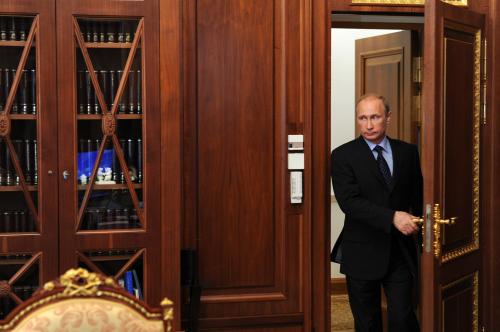
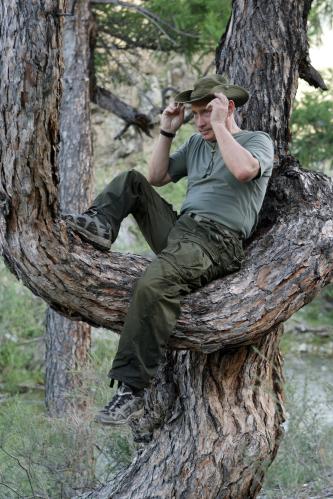
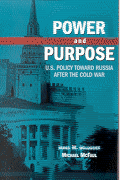
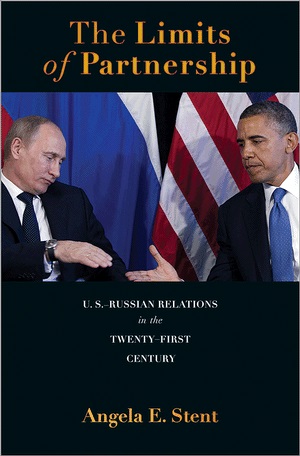
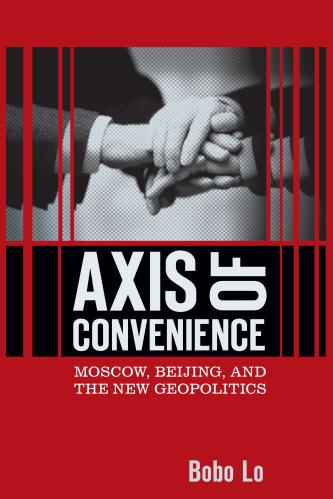



Commentary
Russia without illusions
October 17, 2019